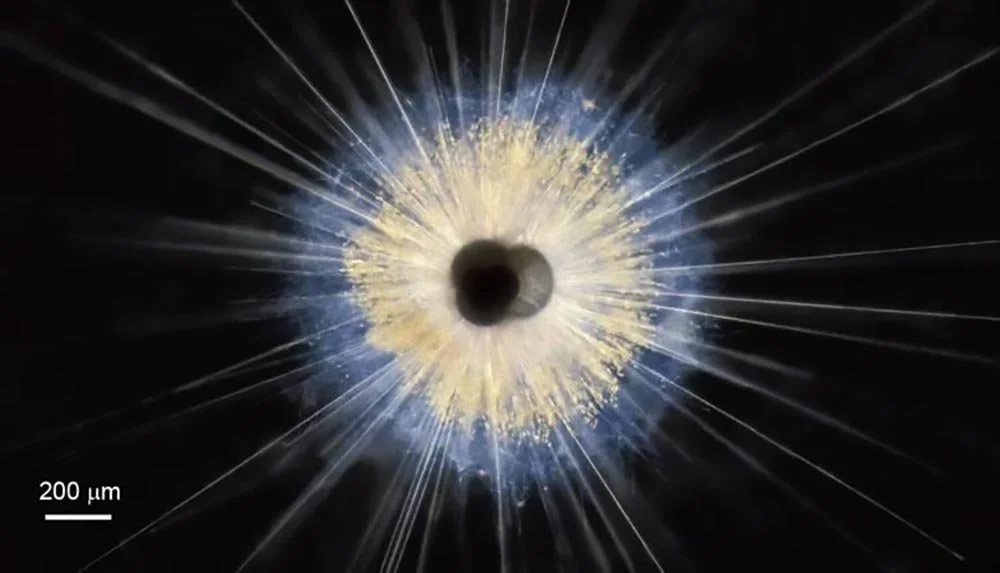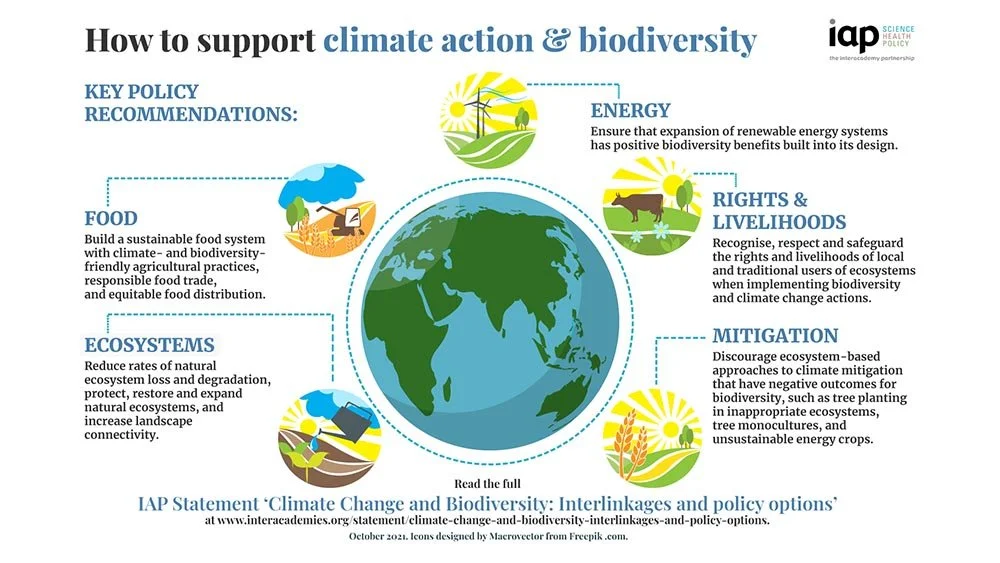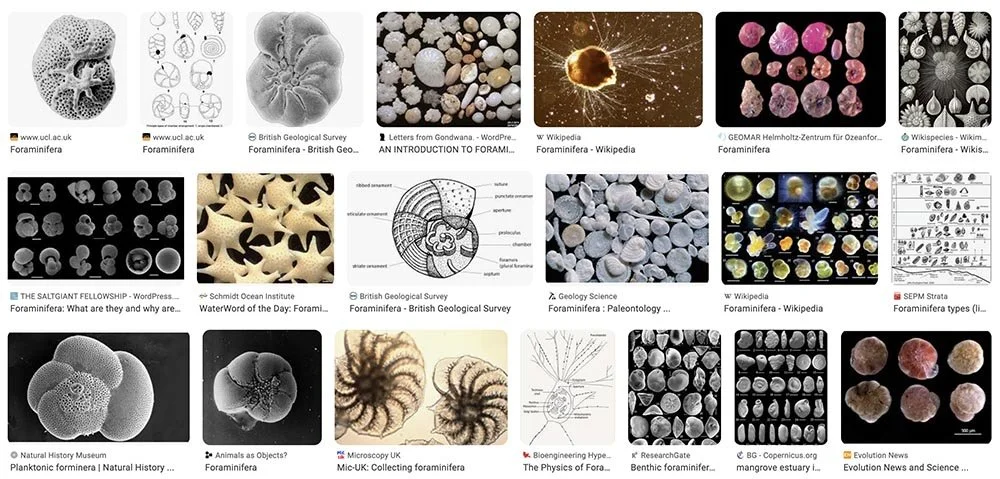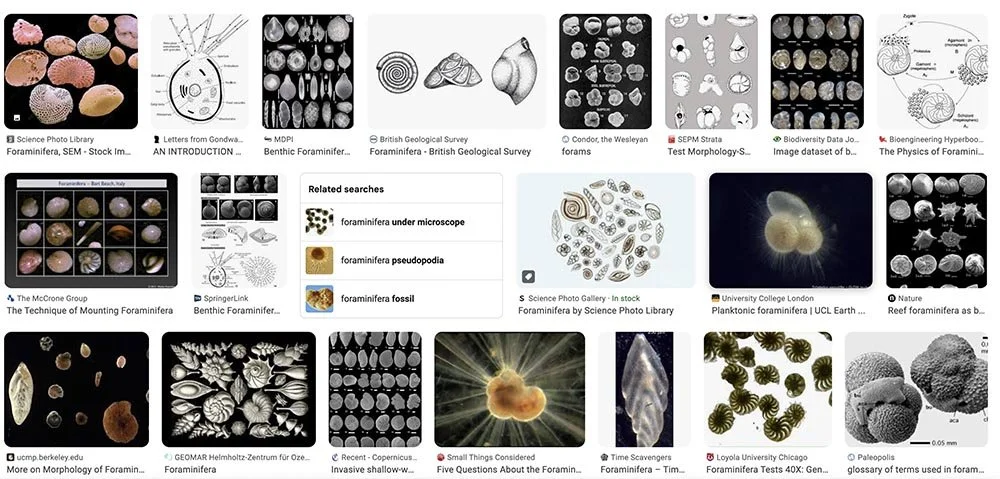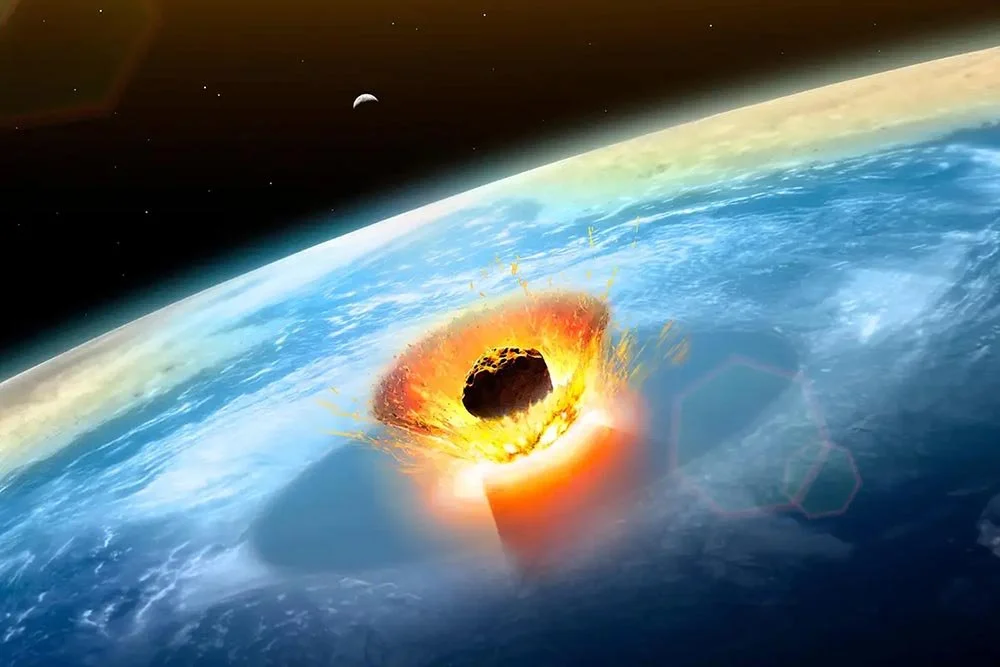The Story of the Ocean Told by Tiny Fossils
What are foraminifera, or forams?
Why are foram fossils helpful to scientists?
How do forams catch their food?
Where do most forams live, and which kind are most studied?
What happened to forams after the asteroid hit Earth?
How do scientists learn about ocean temperatures from forams?
What did forams do to survive during a very warm time?
What is the "twilight zone" in the ocean?
What changes are scientists seeing in forams today?
Why is studying forams important for learning about the ocean's future?
Our planet is going through big changes
Two of the biggest problems are climate change and loss of biodiversity.
Climate change means the Earth is getting warmer, and biodiversity means having many kinds of animals and plants. Both are in danger, and scientists want to know how they will affect life on Earth.
To learn more, scientists look at how animals and plants reacted during past climate changes. But many species don’t leave behind good fossils. One tiny creature, though, is a big help: the foraminifera, or foram for short.
What Are Forams?
Forams are very small sea animals that live in the ocean. Each one is just a single cell, but they make tiny shells, often out of a chalk-like material called calcium carbonate. When forams die, their shells sink to the bottom of the ocean and build up in thick layers of mud.
Their name comes from Latin and means "hole bearers" because their shells have little holes connecting their chambers. Sticky arms come out of their shells to help them catch food.
Most forams live on the ocean floor, but scientists are especially interested in the ones that float in open water, called planktonic forams. These floaters are found all over the world, and they don’t live long, so their fossils give a very detailed picture of what happened in the past.
What Fossils Can Tell Us
Forams have been around for over 500 million years. Their fossils are like a time machine. Scientists drill into ocean mud and pull up long tubes that show layer after layer of foram shells. The deeper they go, the older the shells are.
By studying the chemicals in their shells, scientists can learn things like what the ocean temperature was when the foram was alive. Each kind of foram likes different conditions, so scientists can tell when the ocean was warm, cold, deep, or shallow.
After an asteroid hit Earth 66 million years ago, many forams disappeared. The crash sent dust and smoke into the air, blocking sunlight. Tiny plants in the ocean couldn’t do photosynthesis, so animals that depended on them died. Most floating forams couldn’t survive, but deep-sea ones, which ate leftover dead matter, mostly survived.
It took about 10 million years for forams to recover after that big extinction. New species slowly evolved. With less competition, strange new forams showed up, including some with spines that helped them float and catch food.
Hot Times and Cold Times
Another big change happened 56 million years ago when the Earth warmed up. Deep-sea forams were hurt because the ocean became more acidic and damaged their shells. But many floating forams survived by moving to cooler places.
Then, about 34 million years ago, the planet began to cool. Many fancy-looking forams disappeared. But later, new kinds evolved again.
By about 15 million years ago, the variety of forams became like it is today: lots near the equator and fewer near the poles.
What About the Future?
Scientists used foram fossils to guess what might happen to the ocean’s twilight zone (200 to 1,000 meters deep). If the planet keeps warming, less food will reach this deep area. That would hurt animals living there.
Today, many forams are moving toward the poles because the water near the equator is getting too hot. Some species might not be able to move fast enough.
A recent study showed that the number of forams has dropped by almost 25% in the last 80 years. That could be bad news for other ocean animals too.
Forams have survived many big changes before, so they may not disappear. But it could take millions of years for them to bounce back again.
Climate change — The Earth getting warmer over time
Biodiversity — Having many kinds of living things
Foraminifera (forams) — Tiny sea animals with shells
Fossil — Remains of something that lived long ago
Extinction — When all of one kind of animal or plant dies out
Planktonic — Floating in water, not living on the bottom
Acidic — Like acid; can damage shells or rocks
Twilight zone — Deep part of the ocean with little light
► COMPREHENSION QUESTIONS
— please answer with complete sentences
What are foraminifera, or forams?
Why are foram fossils helpful to scientists?
How do forams catch their food?
Where do most forams live, and which kind are most studied?
What happened to forams after the asteroid hit Earth?
How do scientists learn about ocean temperatures from forams?
What did forams do to survive during a very warm time?
What is the "twilight zone" in the ocean?
What changes are scientists seeing in forams today?
Why is studying forams important for learning about the ocean's future?

